
Exercise 1
A company manufactures and sells two models of lamps, L1 and L2. To manufacture each lamp, the manual work involved in model L1 is 20 minutes and for L2, 30 minutes. The mechanical (machine) work involved for L1 is 20 minutes and for L2, 10 minutes. The manual work available per month is 100 hours and the machine is limited to only 80 hours per month. Knowing that the profit per unit is  10 for L1 and L2, respectively, determine the quantities of each lamp that should be manufactured to obtain the maximum benefit.
10 for L1 and L2, respectively, determine the quantities of each lamp that should be manufactured to obtain the maximum benefit.
Exercise 2
With the start of school approaching, a store is planning on having a sale on school materials. They have 600 notebooks, 500 folders and 400 pens in stock, and they plan on packing it in two different forms. In the first package, there will be 2 notebooks, 1 folder and 2 pens, and in the second one, 3 notebooks, 1 folder and 1 pen. The price of each package will be  7.00 respectively. How many packages should they put together of each type to obtain the maximum benefit?
7.00 respectively. How many packages should they put together of each type to obtain the maximum benefit?
Exercise 3
On a chicken farm, the poultry is given a healthy diet to gain weight. The chickens have to consume a minimum of 15 units of Substance A and another 15 units of Substance B. In the market there are only two classes of compounds: Type X, with a composition of one unit of A to five units of B, and another type, Y, with a composition of five units of A to one of B. The price of Type X is  30. What are the quantities of each type of compound that have to be purchased to cover the needs of the diet with a minimal cost?
30. What are the quantities of each type of compound that have to be purchased to cover the needs of the diet with a minimal cost?
Exercise 4
There is only 600 milograms of a certain drug that is needed to make both large and small pills for small scale pharmaceutical distribution. The large tablets weigh 40 milograms and the small ones, 30 milograms. Consumer research determines that at least twice the amount of the smaller tablets are needed than the large ones and there needs to be least three large tablets made. Each large tablet is sold for a profit of  1. How many tablets of each type have to be prepared to obtain the maximum profit?
1. How many tablets of each type have to be prepared to obtain the maximum profit?
Solution of exercise 1
A company manufactures and sells two models of lamps, L1 and L2. To manufacture each lamp, the manual work involved in model L1 is 20 minutes and for L2, 30 minutes. The mechanical (machine) work involved for L1 is 20 minutes and for L2, 10 minutes. The manual work available per month is 100 hours and the machine is limited to only 80 hours per month. Knowing that the profit per unit is  10 for L1 and L2, respectively, determine the quantities of each lamp that should be manufactured to obtain the maximum benefit.
10 for L1 and L2, respectively, determine the quantities of each lamp that should be manufactured to obtain the maximum benefit.
Step 1 - Identify the decision variables
x = number of lamps L1
y = number of lamps L2
Step 2 - Write the objective function
Write the objective function.

Step 3 - Write the set of constraints
Write the constraints as a system of inequalities.
Convert the time from minutes to hours.
20 min = 1/3 h
30 min = 1/2 h
10 min = 1/6 h


As the number of lamps are natural numbers, there are two more constraints:


Step 4 - Choose the method to solve the problem
We will solve this problem graphically.
Step 5 - Construct the graph
Find the set of feasible solutions that graphically represent the constraints.
Represent the constraints graphically.
As  and
and  , work in the first quadrant.
, work in the first quadrant.
Solve the inequality graphically:

Take a point on the plane, for example (0,0).


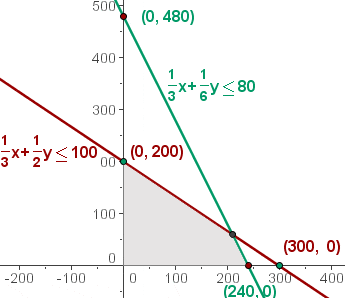
Step 6 - Find the feasibility region of the graph
The area of intersection of the solutions of the inequalities would be the solution to the system of inequalities, which is the set of feasible solutions.

Step 7 - Find the optimum point
Calculate the coordinates of the vertices from the compound of feasible solutions.
The optimal solution, if unique, is a vertex. These are the solutions to systems:






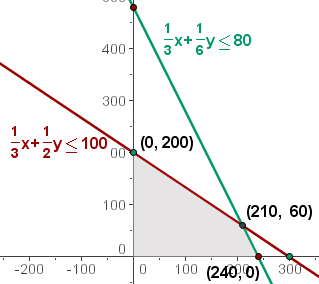
Calculate the value of the objective function at each of the vertices to determine which of them has the maximum or minimum values.
In the objective function, place each of the vertices that were determined in the previous step.



 Maximum
Maximum
The optimum solution is to manufacture 210 units of model L1 and 60 units of model L1 to obtain a benefit of  6.50 and
6.50 and  f(x, y) = 6.5x + 7y
f(x, y) = 6.5x + 7y x + y leq 500
x + y leq 500 2x + 3y leq 600
2x + 3y leq 600 2x + y leq 400
2x + y leq 400 x geq 0
x geq 0 y geq 0
y geq 0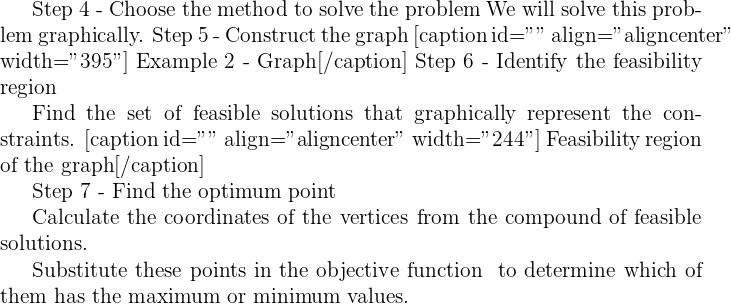 f(x,y) = 6.5 cdot 200 + 7 cdot 0 = 1300
f(x,y) = 6.5 cdot 200 + 7 cdot 0 = 1300 f(x,y) = 6.5 cdot 0 + 7 cdot 200 = 1400
f(x,y) = 6.5 cdot 0 + 7 cdot 200 = 1400 f(x,y) = 6.5 cdot 150 + 7 cdot 100 = 1675
f(x,y) = 6.5 cdot 150 + 7 cdot 100 = 1675 1675.
1675.
Solution of exercise 3
On a chicken farm, the poultry is given a healthy diet to gain weight. The chickens have to consume a minimum of 15 units of Substance A and another 15 units of Substance B. In the market there are only two classes of compounds: Type X, with a composition of one unit of A to five units of B, and another type, Y, with a composition of five units of A to one of B. The price of Type X is  30. What are the quantities of each type of compound that have to be purchased to cover the needs of the diet with a minimal cost?
30. What are the quantities of each type of compound that have to be purchased to cover the needs of the diet with a minimal cost?
Step 1 - Identify the decision variables
x = X
y = Y
Step 2 - Write the objective function.

Step 3 - Identify the constraints
Write the constraints as a system of inequalities.




Step 4 - Choose the method to solve the problem
We will solve this problem graphically.
Step 5 - Construct the graph

Step 6 - Find the feasibility region
Find the set of feasible solutions that graphically represent the constraints.
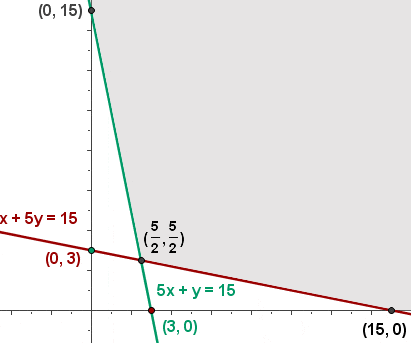
The grey highlighted area represents the feasibility region.
Step 7 - Find the optimum point
Calculate the coordinates of the vertices from the compound of feasible solutions.

Calculate the value of the objective function at each of the vertices to determine which of them has the maximum or minimum values. It must be taken into account the possible non-existence of a solution if the compound is not bounded.


 Minimum
Minimum
The minimum cost is  X = frac {5} {2}
X = frac {5} {2}  Y = frac{5}{2}
Y = frac{5}{2} 2 and the small tablet,
2 and the small tablet,  f(x, y) = 2x + y
f(x, y) = 2x + y 40x + 30y leq 600
40x + 30y leq 600 x geq 3
x geq 3 y geq 2x
y geq 2x x geq 0
x geq 0 y geq 0
y geq 0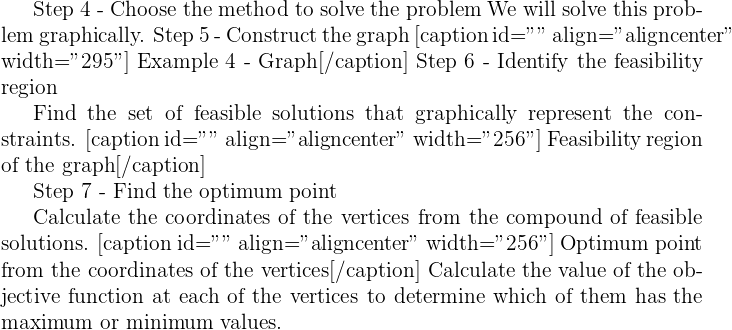 f(x,y) = 2 cdot 3 + 16 = 22
f(x,y) = 2 cdot 3 + 16 = 22 f(x,y) = 2 cdot 3 + 6 = 12
f(x,y) = 2 cdot 3 + 6 = 12 f(x,y) = 2 cdot 6 + 12 = 24
f(x,y) = 2 cdot 6 + 12 = 24 24, and is obtained by making 6 units of the large tablets and 12 units of the small tablets.
24, and is obtained by making 6 units of the large tablets and 12 units of the small tablets.




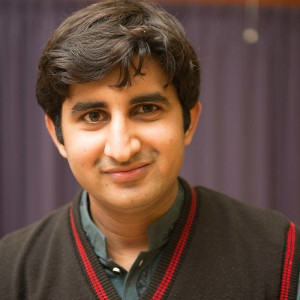







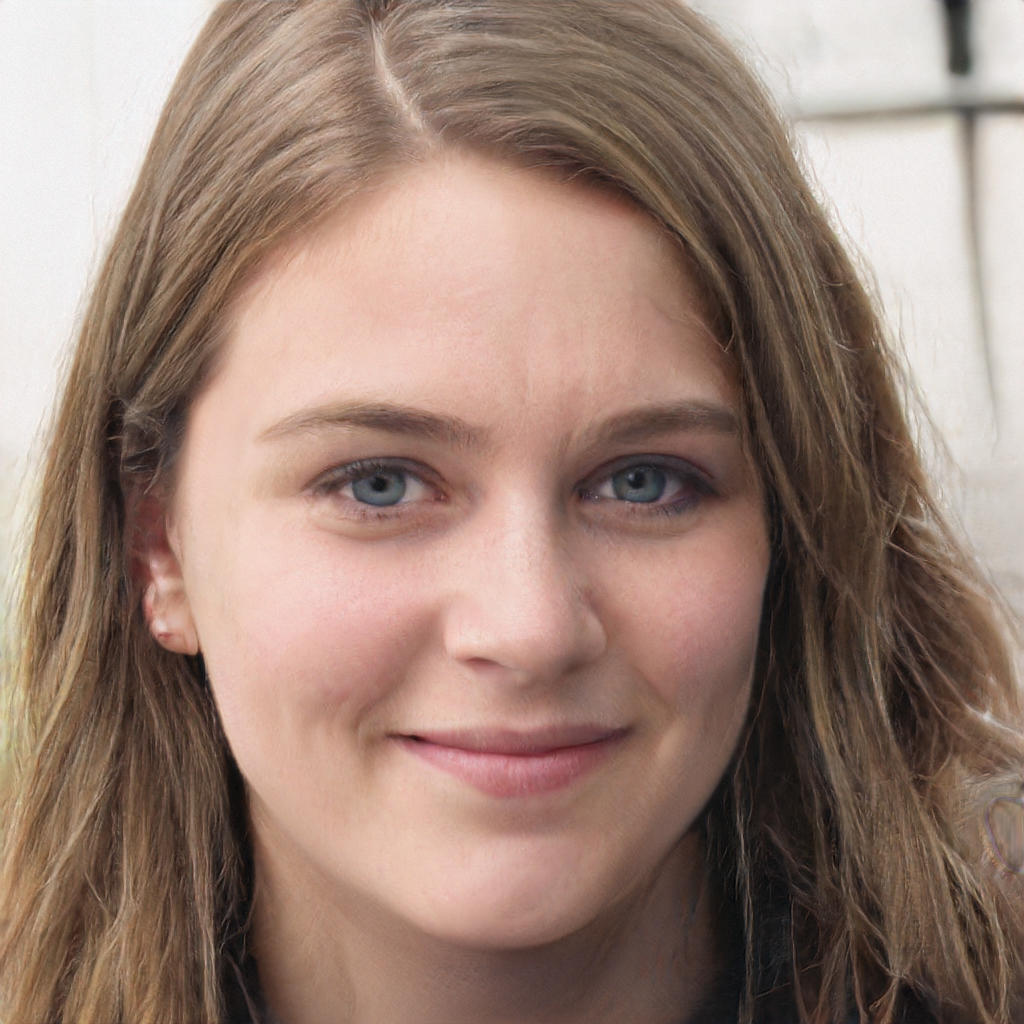
Solve the following LP problem using the Graphical Method
1. A steel producer makes two types of steel: regular steel and special steel. A ton of regular steel requires 2 hours in the open-hearth furnace and 5 hours in the soaking pit; a ton of special steel requires 2 hours in the open-hearth furnace and 3 hours in the soaking pit. The open-hearth furnace is available 8 hours per day and the soaking pit is available 15 hours per day. The profit on a ton of regular steel is P4,200 and it is P5,000 on a ton of special steel. Determine how many tons of each type of steel should be made to maximize . Please answer this
Hi there! 😊
Thanks for your comment. That’s a great linear programming problem, and it’s perfect for practicing the Graphical Method. While we can’t provide a full solution here in the comments, you can find similar step-by-step problems and solutions on our resources site that cover real-world LP scenarios like this one. They’ll guide you through setting up constraints, plotting the feasible region, and finding the optimal solution.
This was excellent
Very good keep it up
Goods answers
Thanks it really worked out for me
A travel agent is organizing a trip for a professional body. She can make arrangements for maximum of 10 people and least four men and three woman in the group . Hee profit is$12.25 fpr each woman and $15.40 for each group.
Solve the linear programming problem using graphical method
This site is the best for revision
Thank you for your comment! 😊
If you’re looking for more scenario-based linear programming questions to practice, we have a collection of word problems and detailed solutions available on our Superprof resources site. These examples are designed to help you apply linear programming concepts to real-world situations.